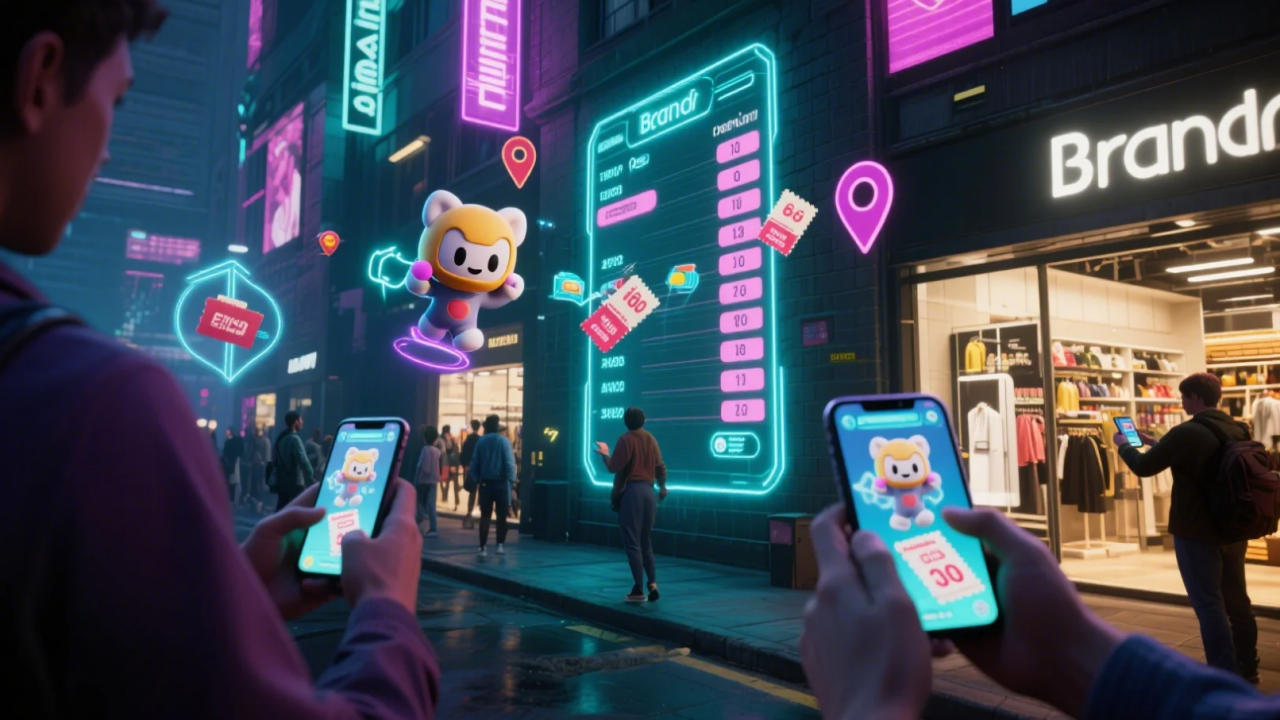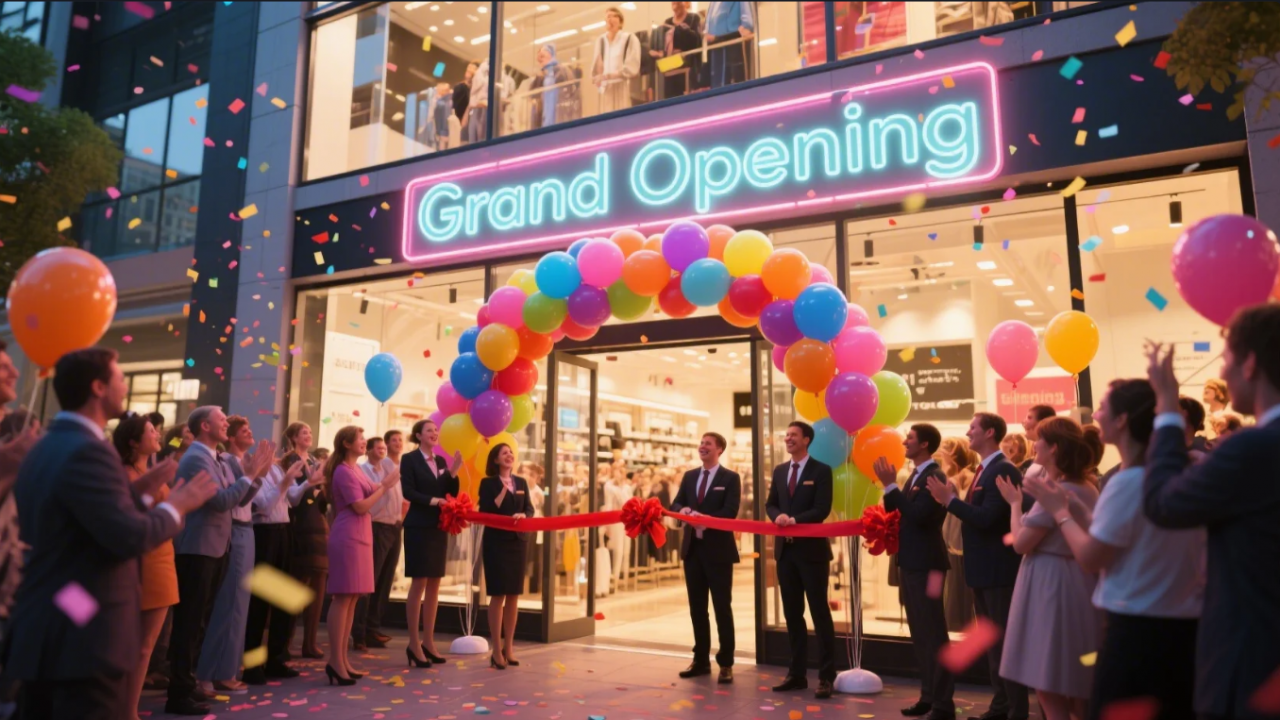Retail is a sector where marketing and shopping trends change every day. Retailers strive to engage customers with unique and extraordinary experiences, and augmented reality is a big game-changer in this regard. It has completely changed how brands advertise and how customers shop. Imagine you are walking in a store where you can view personalized shopping lists, virtually ‘’try-on’’ clothes and accessories, and navigate the retail store with digital signage and overlays. This will make your whole shopping process enjoyable, convenient, and interactive.
What is augmented reality in retail?
In retail, augmented reality primarily serves to make your shopping experience better with interactive approaches. The ‘’try-before-you-buy’’ feature is becoming more common and popular. Whether you want to shop for personal accessories or furniture for your home, it is just a matter of a few taps now. This takes the customer out of the guessing game of which sofa will suit their lounge or what lipstick color will go best with their look. Moreover, this increases the satisfaction of customers in their purchases, reduces return rates, and enhances brand awareness.
How augmented reality is transforming retail?
Virtual try-ons for apparel, accessories, and cosmetics.

The fashion sector is one of the top recipients of this powerful tech, involving virtual fitting rooms, try-ons, and augmented overlays. Customers can check out all kinds of fashion products and see themselves ‘’wearing’’ them. This is all made possible by AR, simply through smartphones. Plus, it all happens in real-time, without taking any step out of your space.
Kivisense offers virtual try-ons from head to toe, where you can try everything from head scarves to clothes, jewelry, make-up, and shoes. Big names, including Gucci, Tiffany, Dior, and Maybelline, have collaborated to create engaging AR-powered experiences to showcase and advertise their offerings. This way, augmented reality helps both brands and customers to sell and buy products with utmost convenience.
Interactive product visualization for home goods and furniture.
Augmented reality has touched every part of the retail sector, making product visualizations full of interactions and engagement. With virtual placement, you can see home goods and furniture models in your space without actually placing them there. You can plan renovation and get AR’s help in deciding what wallpaper, flooring, or ceiling styles will make your space perfect.

Source: Shopify
For example, you can virtually place and see furniture items in your home with Kivisense AR furniture placement. This lets buyers place furniture in their space at a 1:1 scale. Buyers can see all the details like how the items will fit and look in different areas, that too without stepping out of their homes. This reduces uncertainty in the furniture buying process and leads to higher ROIs.
AR in-store navigation and personalized shopping assistance.

Source: councils.forbes
Augmented signage can guide customers to their required retail spaces. It can be in the form of digital arrows or virtual overlays that are overlaid on the route, seen through smartphones. They can also get personalized listings and suggestions, giving them cues about which store they need to approach and what product they need to try there.
Moreover, users can also see special discount offers or ongoing sales through AR apps. In this way, augmented reality makes shopping in retail spaces more convenient and personalized. Users can easily walk around complex shopping areas, shopping for their favorite items at the best rates.
Applications of Augmented reality in the retail market
E-Commerce
Augmented reality makes e-commerce product visualization more immersive and full of interactions. With AR-powered virtual fitting rooms and three-dimensional product previews, users can engage themselves in interactive product explorations.
They can visit online stores without going out of their homes. 3D renderings let them analyze the fine details of every accessory or product through realistic 3D models. This makes them feel like they are interacting with them in person.

For example, Canada Goose, in collaboration with designer Feng Chen Wang, created a virtual showroom to showcase its latest winter clothing collection in a way like never before. The collection included real and virtual designs, which users could check out using augmented reality technology. The virtual showroom had high-quality graphics and realistic displays to help customers figure out the real-life appearance of clothes online.
Physical Stores
Physical retail stores can integrate augmented reality installations to level up the shopping experience of customers. Use of interactive tools like AR magic mirrors and dynamic product displays catch the eyes of viewers instantly.
Users can see any product superimposed on their reflections and engage in fun activities. They can try different products with simple hand gestures and navigate different store sections very easily.

For example, Hearts on Fire has launched a beautiful AR-powered try-on feature for its exquisite jewelry pieces. This involves augmented reality magic mirrors, which show users as they are wearing the jewelry piece on themselves. People can see themselves in any bracelet or necklace, without holding it in hand ever. This exclusive option is accessible at pop-up events or through the WeChat Mini Program.
Omnichannel Strategies
Retail stores need effective omnichannel strategies for them to get more recognition. Augmented reality makes all kinds of advertisements and marketing approaches more impactful by adding an element of interaction for users. These interactive and engaging activities attract more online and foot traffic.
Benefits of augmented reality in retail
Boosts customer engagement and immersion.
Augmented reality helps retailers get more engagement with engaging interactions and activities. Buyers can virtually try on products, see 3D renderings/models, and enjoy many interactions filled with a lot of fun and immersion.
Increases purchase confidence and reduces product returns.
When customers can virtually wear and see products on themselves, they get a realistic preview of products which clears all the doubts about the wrong size or design. Customers become satisfied and chances of product returns reduce greatly.
Differentiates brands through innovation.
Brands in retail market are competing hard to get recognition. And augmented reality is the best way to do that. Providing customers with innovative and unique AR-powered experiences gives you an edge over others and makes marketing more effective.
Provides personalized shopping experiences to cater to individual preferences.
Augmented reality makes shopping more personalized by analyzing user preferences. Users can get style suggestions and product recommendations according to their personal needs. This improves their shopping experience and makes them feel seen by the brand.
Real-life use cases of AR in the retail market
Huawei’s Future Home in Shanghai

Huawei has created a mind-blowing AR experience at the ‘’Ten Days Later’’ future home in Shanghai. This innovative experience gives a glimpse of the use of advanced technologies in home decoration, design, and living.
Users can open the Future Home AR mini-program on their mobiles and point it at Huawei’s Smart Home authorized store. This will let them experience the dynamic AR effects come to life, which presents the building with some engaging interactions.
Livat Shanghai AR experience

Ingka’s new Livat Shanghai opening was an event full of interactive AR experiences. The highlight of event was an ‘’Innovation Hub’’, which led users to the magical world of ‘’AR Planet’’. They could enter that fantasy phenomenon by using their smartphones.
There, they could explore four interactive environments, named Planet Forest, Planet Ocean, Planet Wildflower, and Planet Wonderland. This was a next-level combination of art and technology, with a subtle touch of sustainability.
PRADA’s AR Pop-up

PRADA used augmented reality to advertise its ‘’PARADOXE’’ fragrance at the AR Pop-up Store in CDF Haikou International Duty-Free City. Users were taken to a digital universe where they could snap fun moments on big screens and play scent-matching games to test their memory. It showcased the perfume’s unique qualities in a way that every visitor could interact with easily.
Cloudgo’s AR Try-on for sneakers

Cloudgo, in partnership with Kivisense, has launched a virtual try-on for its ‘’GameOn Running Shoes’’. Customers can try on these highly lightweight sneakers by pointing their mobiles at their feet. They can scan any pair of shoes to visualize it in an augmented scenario, with all the layers and details in view. This helped users check out the next-level comfort of Cloudgo’s sneakers virtually.
Tommy Hilfiger X Miffy AR clothing try-on

Tommy Hilfiger and Miffy came together to celebrate the Chinese Year of the Rabbit in 2023 with an amazing AR clothing try-on feature. They Showcase their latest collection for men, women, and children. The featured 50 items were designed in a stylish and simple way that updates their classic collegiate logo.
To add more fun, they introduced “Tommy Hilfiger Styling LAB”, where customers could try on these items and see themselves wearing them virtually. Young people were the main target and, without a doubt, it succeeded to impress them.
Conclusion
Today’s customers, especially Gen-Z, prefer interactive shopping experiences. Retailers are developing innovative ways, especially by using AR, to keep up with these demands. Studies show that there will be 1.73 billion AR tech users by 2024. The stats show how ripe the AR market is and how it is becoming an everyday thing gradually.
If you want to excel in your business and boost your conversion rates, feel free to contact us. Kivisense offers top-notch AR, VR, and AI-based solutions to gain a competitive edge in the retail and e-commerce market.






